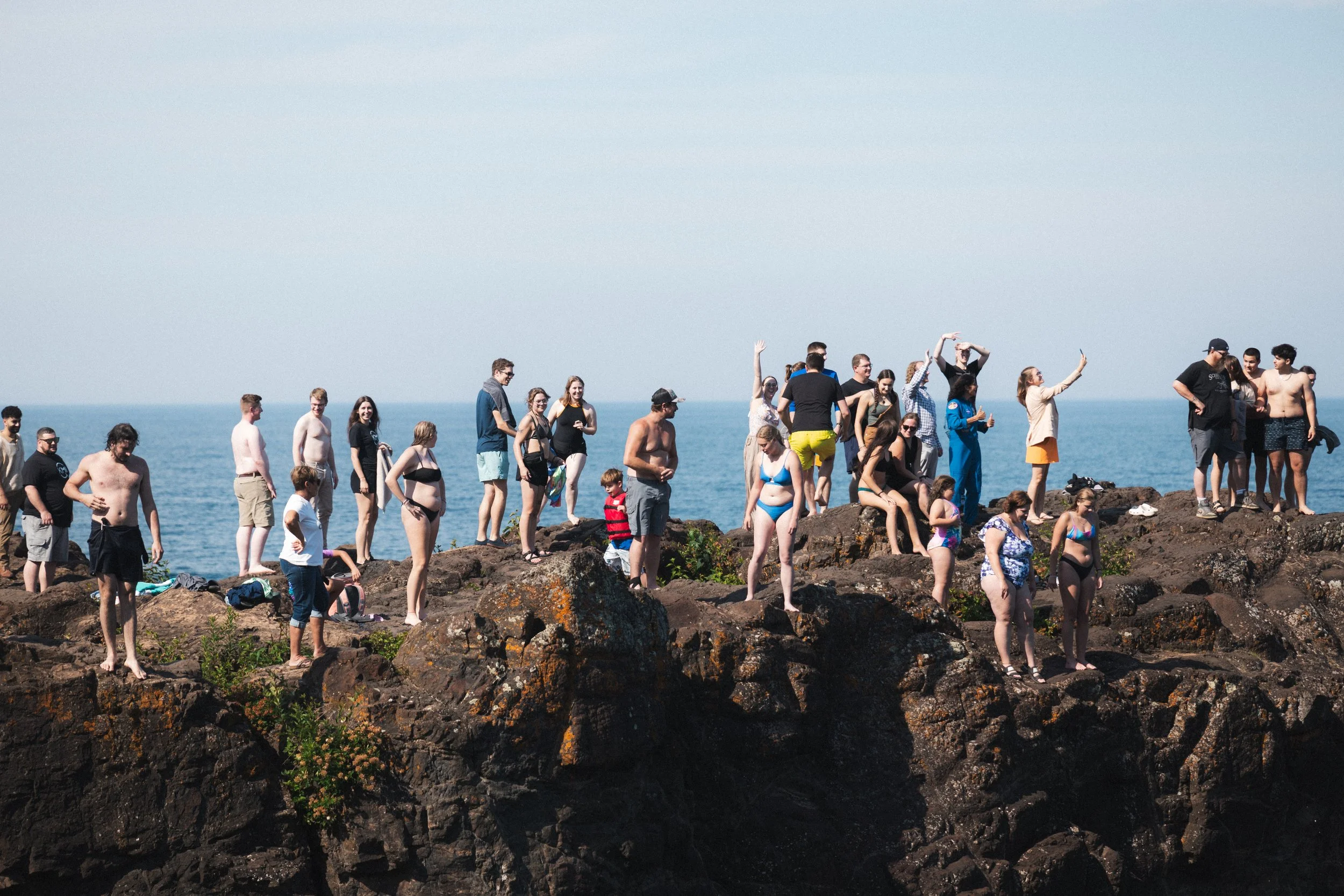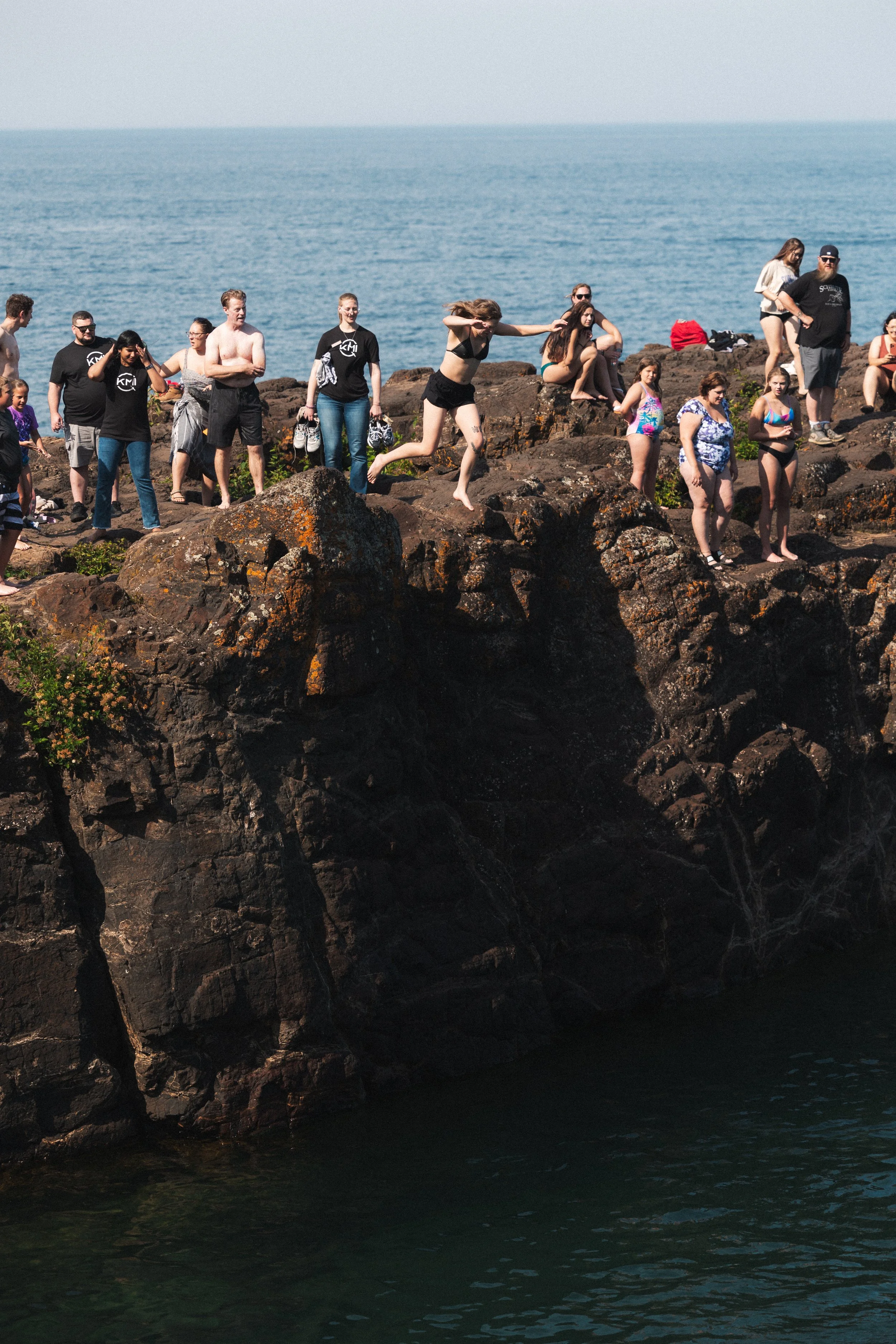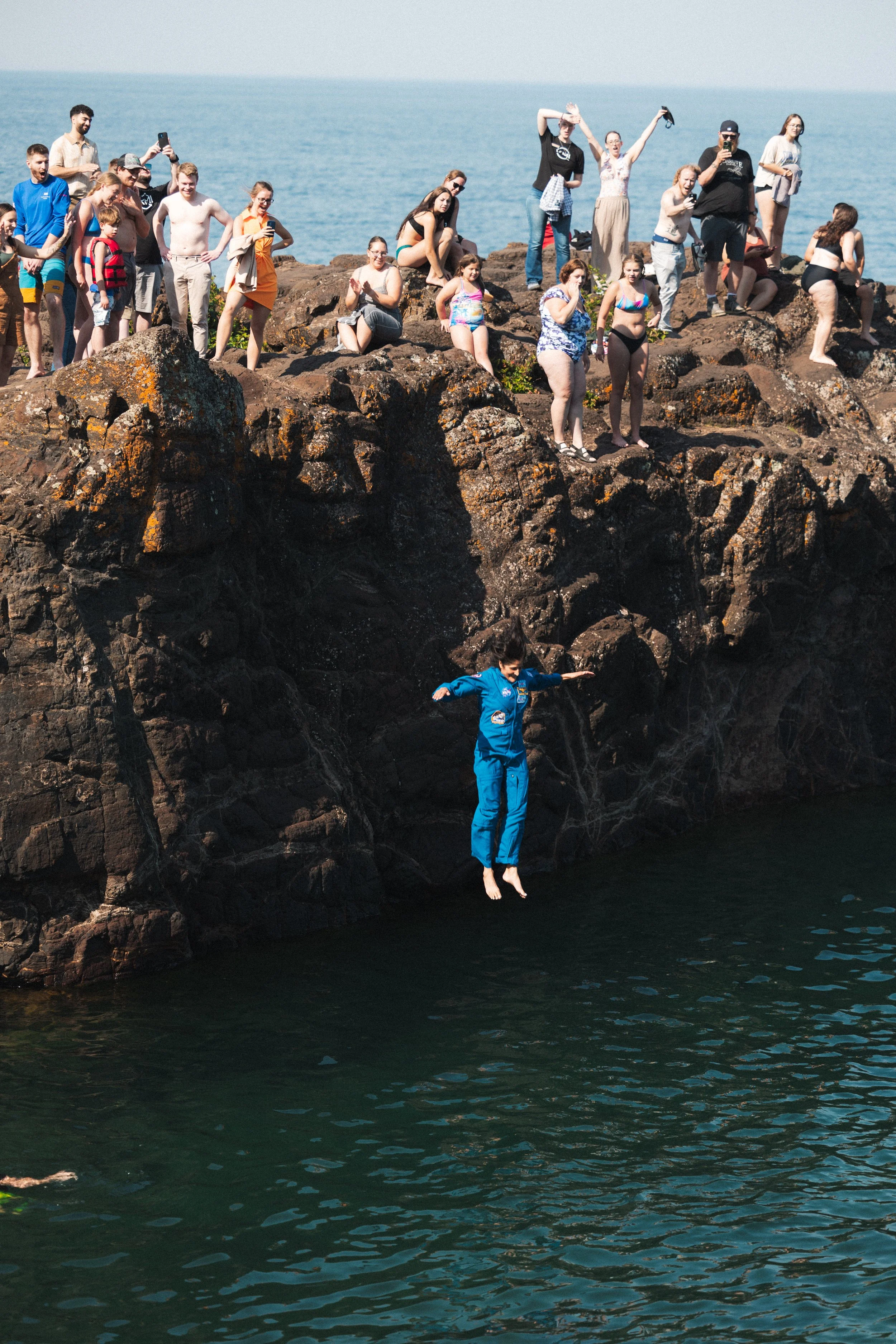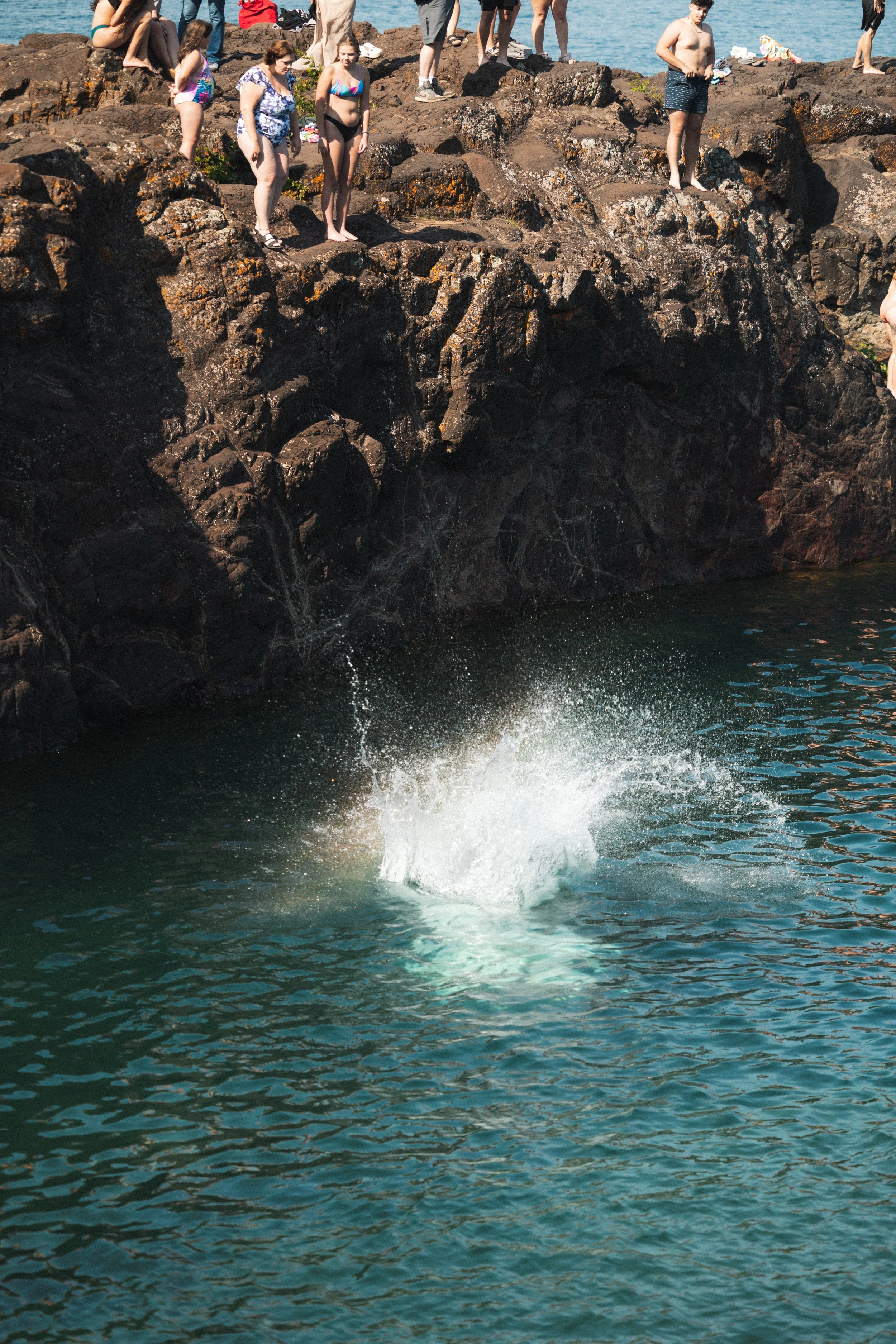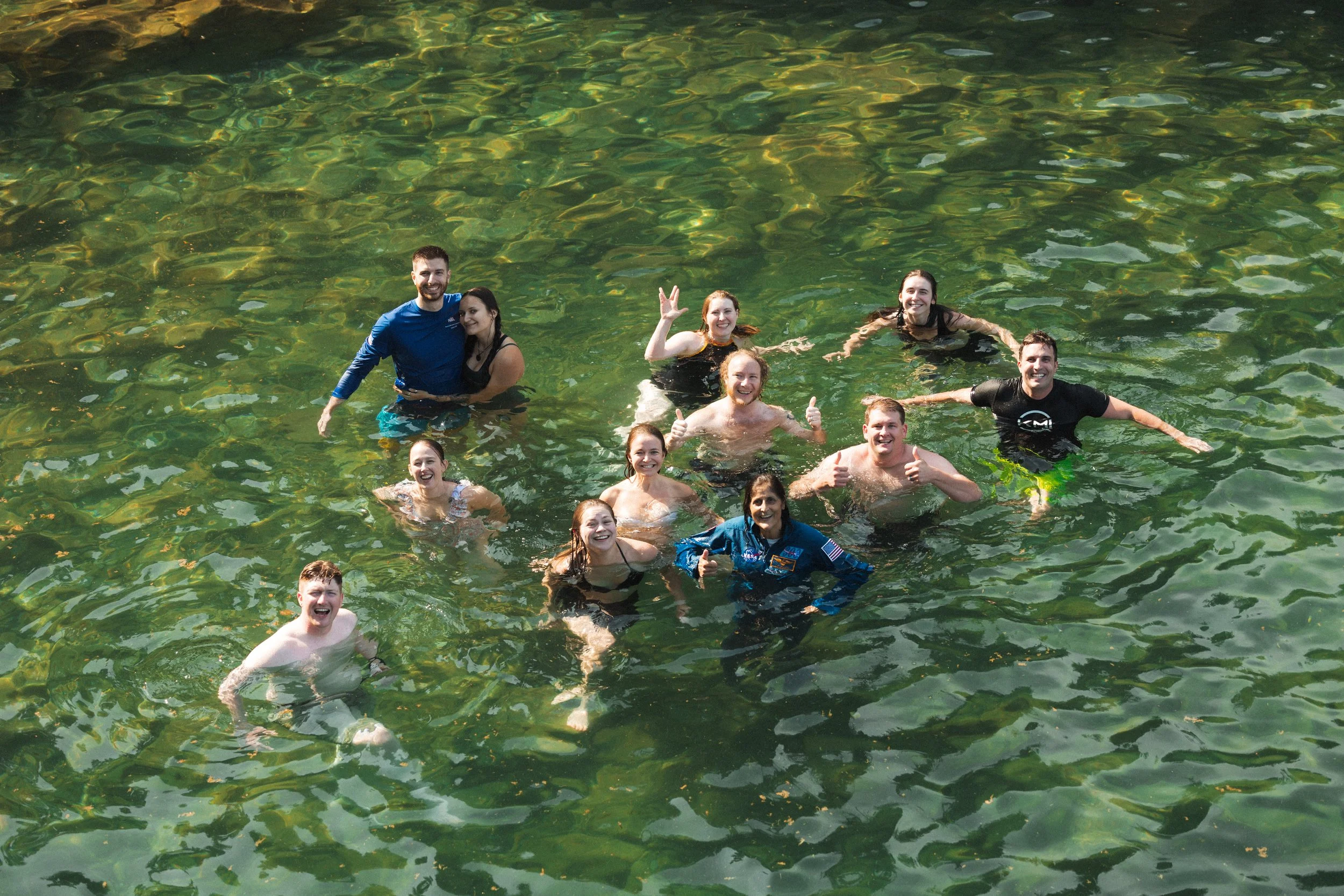A Walk off the Edge of the Planet
A Walk off the Edge of the Planet
Gabby Muehlenbeck, Design & Communications Coordinator
3 minute read
July 14th, 2025. I was standing barefoot on the edge of Black Rocks in Marquette, Michigan, the volcanic stone sun-warm beneath my feet and the wind off Lake Superior whipping goosebumps up my body. The July sun glinted off the sweat on my brow. A shimmer born of heat, but fed by nerves. Below me, the water shimmered too, as if it were mocking my fear. You won’t do it, the lake says as she waves. She was impossibly clear. She was impossibly cold.
A small crowd had gathered behind me, their voices carrying that electric hum of summer dare-making. My heart was pounding. Tunnel vision. That dizzying tightrope between fear and pride.
“It’s not even that high,” I told myself, trying to laugh it off.
I felt like such a baby. The pressure to jump wasn’t from anyone else; it was internal. Performance. Ego. Bravery. Proving myself. Whatever it was, I had already decided. Don’t think. Just jump.
And so I did.
In that moment, between the rock and the water, time opened up. I wasn’t touching anything. Not earth, not water. Suspended in that strange, weightless in-between. For half a second, I was nowhere yet everywhere all at once. And then it hit me. Is this what it feels like to step into space?
Not metaphorically, but literally. Like astronaut Sunita ‘Suni’ Williams has done, not once, but nine times. Suni holds the record for the most cumulative time spent on spacewalks by a female astronaut. Sixty-two hours and six minutes spent floating in the void, outside the relative safety of any spacecraft, tethered to life by a line no thicker than a climbing rope. That terrifying stillness before the tether pulls tight. That pause at the hatch before stepping into open space, not because you want to (well, maybe if you’re crazy enough), but because you must. The mission demands it. The moment calls.
And there I was, suspended in my own version of weightlessness. That hesitation before crossing into the unknown. Then, the drop. The rush of gravity. The sheer aliveness. The only difference? Instead of being surrounded by silence and stars, I was engulfed by the cold, dark depths of Lake Superior.
I hit the water like a punctuation mark and gasped at the cold. It was over. One second I was on the rock, the next I was surrendering myself to the soft summer gales of Mother Superior. Onlookers were cheering, their voices melting into the air like static from the ISS CAPCOM, a distant soundtrack to the pulse in my chest. I did it. And I wanted to do it again.
I turned my head. To my left, surfacing through the gales, was none other than Suni Williams herself. Grinning ear to ear, hair and body soaked, adorned in her iconic blue NASA flight suit. She was so calm. So cool. So casual. Like cliff-jumping into Lake Superior was just another box to check on her way through the day.
I had been so wrapped up in my own fear that I’d forgotten she’d jumped right before me. Just two humans, cliff jumping off a 1.7 billion-year-old magma flow into the largest freshwater surface on Earth, gifts from lava and glaciers. This was child’s play for her. She was commander of the International Space Station - twice, she completed a marathon in space, she chose to turn eight days in space into nine months. One onlooker said “She jumped off the planet, of course she’d jump off the rocks.” A walk off the edge, one of countless she’s made. She must not be afraid of anything.
Reflecting on the bravery of Suni Williams, many have offered a commentary on leaping in the face of fear. Glennon Doyle Melton mused that "If you can’t beat fear, just do it scared." Similarly, Mark Messier is often attributed to "Bravery is not the absence of fear, but the action in the face of fear."
Maybe that’s the lesson. Not to be fearless, but to jump anyway. There’s so much more to the jump than the fall… and maybe, just maybe, you’ll want to jump again.
Recommended column to read next: Beneath Alien Skies, Part Two: Charting Our Course

